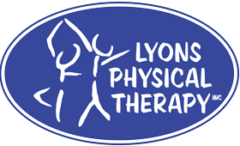Arthritis is a normal part of aging. It develops as the cartilage around your bones deteriorates, narrowing the space between the bones. As the joint fluid looses its ability to lubricate and cushion the joint, the bones start to rub against each other, further deteriorating the joint. There is no single cause or cure of arthritis, though genetics could be a contributing factor. X-rays can show the damage but they can’t show the pain. If pain is starting to limit your ability to do the activities you love, what choices are there to manage the pain? Following are some current and successful ways to deal with osteoarthritis.
Whatever the stage of your arthritis, mild to severe; ‘Motion is the Lotion’. Low impact activities like walking, hiking, swimming and biking are great for keeping the range of motion and function in your knees. A high impact activity like running, probably isn’t the best type of exercise to take up, however if you are already a runner, and can run pain free, keep running. There is not research indicating that running causes or accelerates arthritis.
Injections of ‘artificial’ cartilage. These injections are gaining in popularity and success. The artificial ‘lubrication’ cushions the joint allows for less ‘grinding’ in the joint, which in turn helps decrease the pain and swelling that accompanies arthritis. The injections do not reverse the arthritis but helps one manage the pain. Pain relief can last up to 6 months. Injections can be given yearly. 50-70% of individuals report decreases in pain after the injections.
Stem Cell Injections: This is a non-surgical procedure where bone marrow is taken (typically from your hip) and then injected into your knee. The benefit of taking bone marrow cells is they reproduce daily and have the capability of turning into multiple different kinds of cells (muscle, bone, tendon). Once these cells are injected into the knee, they can help bone and cartilage regenerate. This procedure is performed in the clinic with no down time or side effects. Though it is gaining in popularity, insurance companies do not pay for this procedure. One injection can cost between $300 and $1000. There is limited research on this procedure compared to other treatments. In the past few years, new laws have allowed this procedure to be more widely used, thus research should be quick to follow.
Knee Resurfacing: This is a great option for those with early to mid osteoarthritis. This surgical procedure ‘resurfaces’ only the damaged part of the knee, instead of replacing the whole joint. This surgery is less invasive, has a faster healing time and patients report a 92% success rate after 10 years.
Joint Replacement: This is typically for people who have moderate to severe osteoarthritis. The pain is affecting their quality of life, and they have not benefited from other treatments or therapies. Joint replacement is a procedure that takes planning and preparation. This rehabilitation is at least 3 months and a full recovery can take up to a year. A total joint replacement involves multiple stages of care and requires help from family and friends. Because a joint replacement surgery is quite involved, further details of what to consider when having this procedure will be addressed in a future article.
All of the above are current ways people successfully deal with knee osteoarthritis. Everyone has different levels of activity, pain tolerance and healing times; thus, it is important for each individual to investigate which option will work best for them. Talking to your health care provider, friends and family members can be a valuable tool when making a decision.
